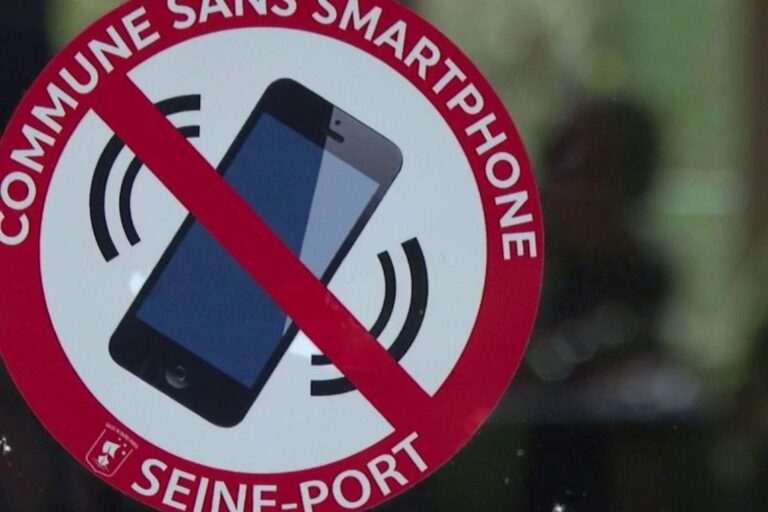France is set to enforce stricter regulations on mobile phone usage in middle schools, aiming to curb distractions and improve the learning environment for students. The new measures, announced by education authorities and highlighted in The Guardian, will expand the current ban to include all devices throughout the entire school day. This policy shift reflects ongoing concerns about the impact of smartphones on young learners’ concentration, social interaction, and overall academic performance.
France strengthens mobile phone restrictions in middle schools to improve student focus
In a bold move to foster a more conducive learning environment, French authorities have announced enhanced regulations that will further restrict mobile phone use in middle schools across the country. This initiative aims to curb distractions and improve students’ concentration during class hours. Under the new rules, students will be prohibited from having their phones on their person during the school day, a step beyond the existing ban on usage. Schools are encouraged to implement designated storage areas, ensuring devices are secured and inaccessible until dismissal.
The government highlights several expected benefits from this tightened policy, including:
- Improved academic performance: Reduced interruptions allow for deeper engagement with lessons.
- Enhanced social interactions: Students are more likely to engage face-to-face without screens.
- Lower stress levels: Decreased exposure to social media pressure during school hours.
| Current Policy | New Restrictions |
|---|---|
| Phones allowed but usage banned during class | Phones must be stored securely away from students |
| Teachers enforce usage limits | School administrations responsible for compliance monitoring |
| Varied enforcement across regions | Standardized rules nationwide for all middle schools |
Impacts of the new mobile phone ban on classroom behavior and academic performance
The reinforcement of the mobile phone ban in French middle schools has led to noticeable shifts in both classroom conduct and students’ academic outcomes. Teachers report a visible decline in distractions, enabling more focused and interactive lessons. Students are less tempted by social media and messaging apps, fostering greater participation and attentiveness during instructional time. This environment encourages healthier peer interactions, as face-to-face communication replaces virtual engagement.
- Improved concentration: Reduced screen time leads to heightened focus on learning tasks.
- Behavioral benefits: Teachers observe fewer disruptions and classroom management challenges.
- Academic uplift: Preliminary data suggest better performance on tests and assignments.
| Metric | Before Ban | After Ban |
|---|---|---|
| Average Test Scores | 72% | 81% |
| Classroom Disruptions (per week) | 15 | 7 |
| Student Participation Rate | 60% | 78% |
While the policy’s benefits are promising, some educators caution about the initial adjustment period. Students accustomed to digital devices report challenges adapting to the new rules, which can momentarily affect classroom dynamics. Nonetheless, the general consensus points to a positive transformation, with many schools considering supplementary programs to support students in managing digital habits and maximizing face-to-face learning opportunities.
Challenges faced by educators and parents in enforcing the tightened mobile phone policy
Implementing stricter restrictions on mobile phone use in middle schools presents a delicate balancing act for both educators and parents. Teachers often find themselves in the difficult position of enforcing rules that may conflict with students’ habitual reliance on devices for communication, entertainment, and even certain aspects of learning. This tension can lead to disciplinary challenges, where students may attempt to use phones covertly, causing disruptions and diverting attention away from classroom activities. Meanwhile, educators must also grapple with the added burden of constant monitoring, which can detract from teaching effectiveness and increase stress levels within school environments.
Parents, on the other hand, face their own set of obstacles in adapting to these policies. Many rely on mobile phones as a crucial means of staying in touch with their children, especially during emergencies or logistical coordination. The tightened ban can raise concerns about safety and accessibility, making some parents reluctant to fully support or enforce the rules at home. Additionally, without clear and consistent communication between schools and families, misunderstandings about the policy’s intent and scope can arise. Below is a summary of shared concerns from both parties:
| Issue | Educators’ Perspective | Parents’ Perspective |
|---|---|---|
| Monitoring | Time-consuming, distracts from teaching | Unclear responsibilities during off-hours |
| Student Compliance | Resistance and secret use disrupt lessons | Concerns about communication gaps |
| Safety | Ensuring secure school environment | Need for reliable contact in emergencies |
| Policy Clarity | Inconsistent enforcement leads to confusion | Misunderstandings of rules and exceptions |
Recommended strategies for schools to support students during the transition to a phone-free environment
To ease the adjustment for students, schools should implement a range of supportive measures that promote positive engagement without reliance on mobile devices. Creating designated phone-free zones paired with engaging activities can help fill the void left by restricted screen time. Teachers and administrators might encourage collaborative projects, physical exercise, and creative arts as alternatives that stimulate social interaction and cognitive development. Additionally, communicating the rationale behind the restrictions transparently and involving students in setting new guidelines cultivates a sense of ownership and cooperation.
Effective support also requires equipping educators and parents with tools to aid the transition. Providing workshops on digital literacy and time management can prepare students to navigate their day with more focused attention and reduced digital distractions. Schools could also establish clear policies to address phone-related anxieties, including access to counseling or peer support groups. Below is a summary of key support strategies for a smoother transition:
| Strategy | Purpose |
|---|---|
| Collaborative projects | Promotes teamwork & social skills |
| Creative arts programs | Encourages self-expression |
| Workshops for educators & parents | Enhances understanding & support |
| Counseling services | Addresses emotional challenges |
| Student involvement in policy | Builds ownership & compliance |
Final Thoughts
As France moves forward with expanding restrictions on mobile phone use in middle schools, the decision underscores the government’s ongoing efforts to address concerns around student concentration, cyberbullying, and digital addiction. The implementation of these tighter rules will be closely watched by educators, parents, and policymakers alike, as the country seeks to balance technological access with a focused learning environment. How this policy will impact student behavior and academic outcomes remains to be seen, but it marks a significant step in the evolving conversation around technology in education.




